#Eremophila
Explore tagged Tumblr posts
Note
do you have any horned larks? some of them are so round and angry looking and i love them so much

Horned lark or Shore lark (Eremophila alpestris), family Alaudidae, order Passeriformes, northern US
photograph by Danita Delmont

Horned lark or Shore lark (Eremophila alpestris), family Alaudidae, order Passeriformes, IL, USA
photograph by Bryan Hix

Horned lark or Shore lark (Eremophila alpestris), family Alaudidae, order Passeriformes, OR, USA
photograph by Tom Grey
622 notes
·
View notes
Photo
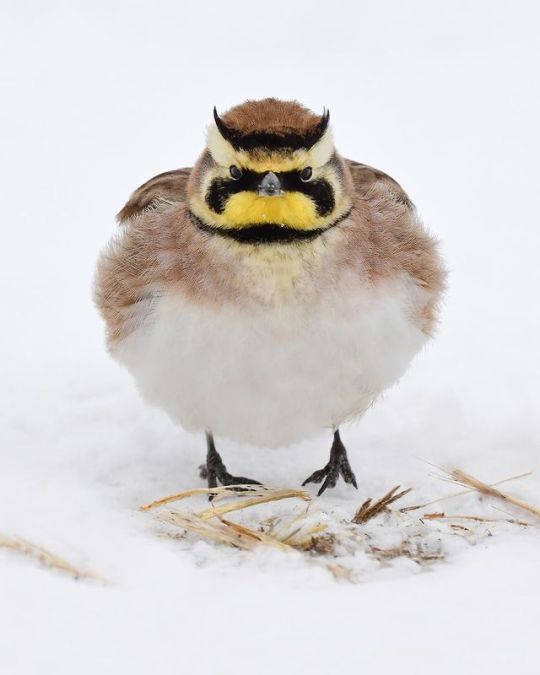
Horned Lark
186 notes
·
View notes
Text
Pangarinda Botanic Garden, Wellington SA, part 2
Dear Reader: As we walk around the waterhole, I notice a large spider clinging to the corner of a fallen branch. Closer examination reveals it to be the shed carapace of a large Huntsman Spider. Spider carapace We are continuing (see previous post) our walk around the Pangarinda Botanic Park in Wellington East. We have reached a waterhole which is currently dry but surrounded by flowering Grass…

View On WordPress
#Eremophila#grass trees#Pangarinda#reed warbler#South Australian tourism#South Australian wildlife#Wellington#wildlife photography
0 notes
Photo

Horned Lark (Eremophila alpestris)
© Aseem Kothiala
69 notes
·
View notes
Text
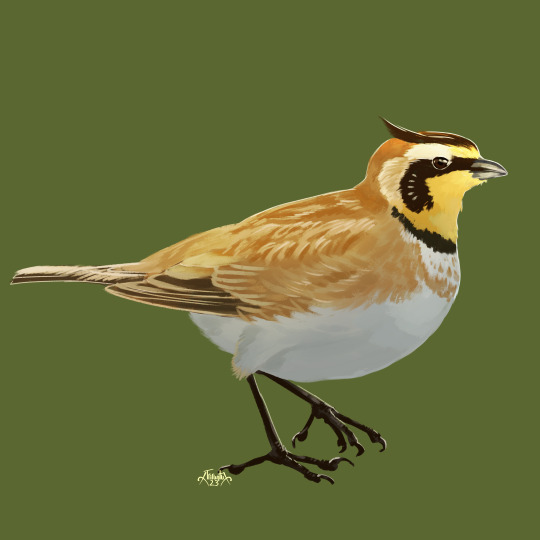
#539, a horned lark.
Requests for birds are open, updates happen on Thursdays. [project tag] | [kofi] Find me on: [twitter]
64 notes
·
View notes
Text
BOTD: Horned Lark

Photo: Doug Greenberg
"On open fields in winter, flocks of Horned Larks walk and run on the ground, examining the soil and stubble in search of seeds. If disturbed, the flock makes away in swift, twisting flight, making soft lisping callnotes. This species, the only native lark in North America, begins nesting very early in spring in those same barren fields, and the tinkling songs of the males come from high overhead as they perform their flight-song display. The 'horns' of the Horned Lark are little tufts of feathers, visible only at close range."
- Audubon Field Guide
#birds#horned lark#birds of north america#north american birds#larks#lark#birds of the us#birds of canada#birds of mexico#passerines#bird#birds of america#american birds#birding#birdblr#birblr#bird watching#bird of the day#Eremophila alpestris
55 notes
·
View notes
Text
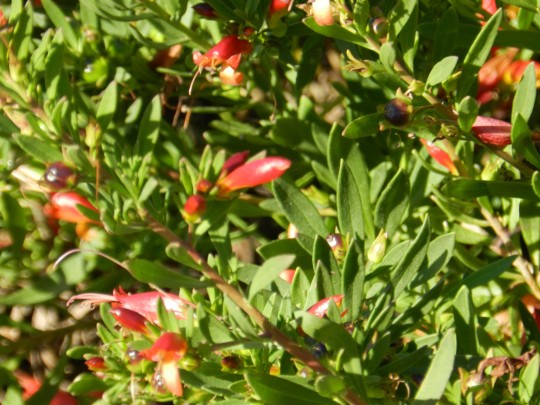
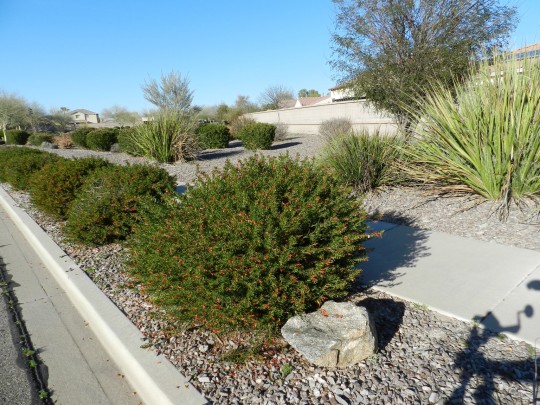
Figwort (Eremophilas) Bush - February 2024 The waxy green bushes with red flowers that never really open are planted all along the roadways as I ride up to Mission Valley here in Casa Grande. I have tried for three years to figure out what they are. My Seek app on my phone has no clue, which is unusual. All of my searches for Arizona plants with anything near their description has been useless. Then I tried a direct Google image search using the second image. Almost everything it brought up was from Australia and I was about to give up when I noticed that one of the matches was from “Arizona Plant Lady.” It seems these bushes are popular as an import for landscaping purposes here in Arizona. They are technically a perennial even though they look like a bush. Why an Australian desert plant is allowed into Arizona’s desert environment is a mystery to me, but they look good and make a nice image. MWM
1 note
·
View note
Text





A Yellow-feathered Feathursday
Today we bring you all the yellow-feathered birds illustrated in hand-colored wood engravings by British author and wood engraver Eric Fitch Daglish (1892-1966) from his 1948 publication Birds of the British Isles, published in London by J. M. Dent & Sons in 1948 in a limited edition of 1500 copies. From top to bottom:
Eurasian Golden Oriole (Oriolus oriolus)
European Goldfinch (Carduelis carduelis)
Horned Lark or Shore Lark (Eremophila alpestris)
Yellowhammer (Emberiza citrinella)
Yellow Wagtail (Motacilla flava)
Birds of the British Isles is a donation from our friend, Wisconsin wood engraver Tony Drehfal.
View more posts from this volume.
View more Feathursday posts.
#Feathursday#Birds of the British Isles#Eric Fitch Daglish#J. M. Dent & Sons#wood engravings#Eurasian Golden Oriole#Golden Orioles#European Goldfinch#Horned Lark#Shore Lark#Yellowhammer#Yellow Wagtail#wagtails#birds#birbs!
208 notes
·
View notes
Text

Horned Lark Eremophila alpestris
1/12/2023 Bolsa Chica, California
#horned lark#horned larks#lark#larks#bird#birds#wildlife#bird photography#nature#birding#birdwatching#birblr#wildlife photography#my photos
14 notes
·
View notes
Text
youtube
We meet a garden guru known for celebrating the diverse and unique flora of arid Alice Springs.
Geoff Miers is a garden legend who calls the heart of Australia home. He's passionate about coaching others to garden in arid conditions, and his career on ABC talkback radio has run for as long as Gardening Australia has been on the air. Over the decades, Geoff's also been growing and selling plants from his nursery and has learned a thing or two about coping with an arid climate.
"It's a desert environment; the climatic extremes are colossal," says Geoff with winter temperatures dropping below -8°C for weeks at a time and summer temperatures reaching 45°C in the shade. "We can have no rain for two months, three months, six months and then the Todd (River) will flow. You never know what's around the corner," says Geoff. "That's the exciting part; it's challenging. But if you understand and respect the environment, and work with the climate, you will have a fantastic garden." The NT has the highest population turnover in Australia and Geoff says, "constantly people are exposed to the new environment, and they need coaching, and that's where I try to play an important role."
In his nursery, Geoff sells citrus and other plants suitable for arid zones. He shows us plants with fine needle-like leaves that don't lose a lot of water through evaporation. One example, Acacia peuce or Waddywood, is a rare tree. Geoff says, "they'll grow for 500 years and once they are old you can't even put a nail in them, they're that tough. They have adapted to the most extreme environment anywhere in the world," says Geoff. The red mulga, Acacia cyperophylla is another one that's similar. Geoff says, "it's a hardy tree and it has this flaking, minni ritchi bark. It's just stunningly red and it's the most outstanding feature." Eremophilas are increasingly popular with many varieties of colour and fantastic blooms. Geoff says, "they are such a fantastic plant for diverse conditions, they are just stunning in terms of the floral display… and they'll grow in sand, they'll grow in even heavy clay." Geoff says his favourite is Eremophila macdonnellii 'Simpson Desert Form' because it has "flowers through spring, summer and autumn, is tolerant of a diverse range of soil conditions."
Geoff propagates thousands of plants each year at home, including 3,000 native lemongrass, 1,500 kangaroo grass or Themeda triandra, and several groundcovers. "They're bird attracting, bush tucker foods, suitable for this environment and the demand for them is endless," says Geoff. His propagation house has over 5,000 cuttings, "all starting to develop roots… before long all these plants will be in tubes and pots, and by next autumn and they'll be out in people's gardens," says Geoff. His own home garden is filled with central Australian plants with a towering ghost gum as the centrepiece. He says this tree "epitomises to me everything about central Australia, it's glorious." When the dog chewed through the irrigation lines 18 years ago, he turned the water off. "I now only water this garden in the first or second week of January and that's it. I give it five inches of water and that recharges the plants," says Geoff, "I try to demonstrate what I preach in my front yard; it's designed to suit this environment."
Appropriate gardens and water conservation is something Geoff has preached and written about for over 30 years. Geoff says, "that's been my message all along. With climate change, it was predicted that we would have greater droughts, greater floods, greater extremes of temperature. We're already experiencing that in central Australia, so you've got to be prepared for that. The best way to do that, is to create a garden that's best suited for the climatic extremes."
#gardening australia#solarpunk#australia#arid gardens#arid plants#Alice Springs#Geoff Miers#desert#Todd River#water conservation#native plants#native species#Youtube
3 notes
·
View notes
Note
.trwick or wetarete- sorry let's try that again trick or treat :D
Have the Horned Lark, Eremophila alpestris!
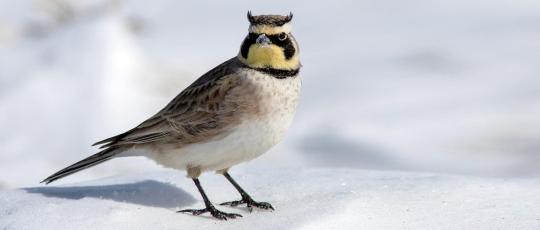
(Source)
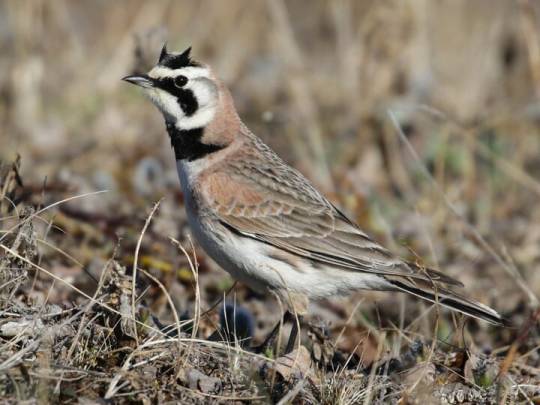
(Source)
I found range maps that show worldwide and I think I'm just gonna post the maps instead of describing them. Orange is breeding, blue is nonbreeding, and purple is year-round.

(Source)
Horned larks nest on the ground in open grasslands and often place things such as pebbles and clods of dirt around their nest.
Female courting displays resemble taking a dust bath. This is unfortunate, because they do actually take dust baths too, which means sometimes a male will try to mate with a female that was just trying to keep her feathers in good condition.
Unfortunately they're in steep decline.
7 notes
·
View notes
Text


✧・゚: *✧・゚:* 🐙 AZUL BIRTHDAY SSR FLOWER ANALYSIS* 🐙*:・゚✧*:・゚✧
*Mandatory reminder that I’m no flower specialist, which means these are all very subjective opinions. Take everything with a grain of salt!
He either has lilac, ivory, or white roses (sorry but I’m never sure if it’s the shading or lighting but I’m always so unsure when they’re doing anything pale-colored.) Lavender/lilac roses stand for adoration, fascination, mystery, and enchantment, as well as eternity and a long life/quality of life. They’re usually given to those overcoming an illness, or for an anniversary (in which case their meaning changes to that of happiness (of being together)). The meaning of lilac roses generally is a bit vague, but if one looks at purple roses (even though they’re a much deeper color than what we can see in Azul’s bouquet) the flower language probably fits him/the values of the Sea Witch best, since purple is associated with power, prestige, and great achievement, as well as deep understanding and compassion. Ivory roses, on the other hand, represent luxury, charm and elegance, as well as thoughtfulness, grace, and perfection. They’re typically given as a gift to someone with excellent taste and style, as well as to show you care about the recipient without romantic connotations. White roses symbolize loyalty, purity, and innocence, as well as a new start/new beginnings and eternal love. While they’re popular wedding or funeral flowers, when they’re not given on a special occasion they’re supposed to convey appreciation for the recipient’s support and/or guidance. Or they’re gifted as a symbol of good heath to those struggling or to wish the recipient a prosperous future. Another thing to note is that the number of roses holds symbolic meaning as well. Azul has four roses – the reading of which is “nothing will come between us.”
On the left side of his bouquet he has clematis, which symbolize beauty of ingenuity and mental strength, ambition, wisdom, agility, and mischief. In Russia and Bulgaria they’re used to symbolize the joy of travelling. Purple clematis is used to express an elevated rank in society, wealth and royalty. It’s given to those you want to show your appreciation for their quick wit and ability to hold intellectual conversations. Since it squashes other flowers when it climbs to its full height it’s also used to represent mischief, deception, and egotism.
The silvery-purple thin ones next to the clematis are eremophila nivea, which, as far as I could gather, have no real symbolic meaning. They’re desert and solitude loving plants that have the ability to persist under the most undesirable conditions. It’s a popular ornamental plant, that’s tolerant of most soil.
White clovers are known for their use as good luck charms, but it’s also said they can ward off evil spirits. They also symbolize protection and (improvement of) love. Their essence can help overcome fears and a sense of inadequacy, live through change, as well as reducing fear of abandonment and failure.
The hydrangea on the right side of his bouquet symbolize a desire to understand someone deeply, as well as luxury, grace, pride, compassion and understanding (and a deep concern for others’ wellbeing). It also represents wealth, richness and fortune. In Europe they’re more associated with pride since they’re usually given to people who have been married for many years (this might be an allusion to his relationship with the tweels?) Hydrangeas can also symbolize elegance, gratitude, apology, vanity, bragging, vanity, and boastfulness.
Lavender represents purity, devotion, calmness, grace, elegance, refinement, and luxury. Since they’re often used as infusions or fragrance to induce a sense of tranquility they’re associated with serenity and virtue. It can also stand for undying love.
Purple carnations are most commonly known to represent capriciousness and whimsicality. However, they have many other readings as well, like that of unpredictable behavior, making it a perfect gift for someone who is daring, wild, and free spirited, though it’s also associated with success and wealth. They can also be given to someone you find witty, or as an apology. Though Azul’s flowers are fairy light in color, the depth of the shade usually evokes a sense of thoughtfulness, peace, and harmonious balance of consciousness, or to sooth your mind and reduce anxiety, helping the recipient remain calm in the face of adversity. Other meanings include creativity, open-mindedness, as a symbol to encourage acceptance and understanding, a celebration of diversity and equality, as well as compassion and an empathetic state of mind.
Eucalyptus are a symbol of strength, protection, resilience, adaptability, and abundance. They’re said to purify negative energy, though they can also invoke good health and protection. Other symbolism associated with eucalyptus are that of inner and outer strength, as well as leadership.
Naturally, these are only my un-educated guesses, but feel free to let me know if I got anything wrong/what flowers I might’ve missed.
26 notes
·
View notes
Text
Ooo I got Eremophila punctata (western aus flowering plant!)
ur government assigned gender for the day is the first thing u get when u click this link to a randomised wikipedia article. NO REROLLS . i am the trollsteineggje mountain in norway
125K notes
·
View notes
Text
Ancient Pattern in Bird Feathers Could Show Us Which Dinosaurs Could Fly
New Post has been published on https://petn.ws/obLCp
Ancient Pattern in Bird Feathers Could Show Us Which Dinosaurs Could Fly
After analyzing hundreds of preserved bird specimens in museum collections around the world, researchers have determined that there is a distinct set of feather rules behind flight power. The newly discovered rules may help scientists predict which dinosaurs could fly. Flight feathers of Temminck’s Lark Eremophila bilopha (left) and wing of a fossil bird, Confuciusornis […]
See full article at https://petn.ws/obLCp #BirdNews
0 notes
Text
tagged by @barbieyaga, ty for tagging me :))
lockscreen, most recent photo & last song i listened to



my lockscreen is some summery zen and genji art that i found & really love, idk the artist i would love to credit them cause the art is so pretty,,
most recent photo is a screenshot of the walgreens i switched to to pick up my meds & T?!?!
and yea shrugs last listened on spotify
erm tagging uhhh @eremophila-alpestris @bimalewife @prizmpaws erm idk who else to tag feel free to just do it if u want even if i didnt tag, also lmk if you dont wanna be tagged in this stuff
1 note
·
View note
Text
4/11/2023 - I LOVE this bush! I got it years ago and it was little. It has flourished and dutifully blooms around Easter. It is a Easter Egg Emu, Eremophila Racemosa.

0 notes